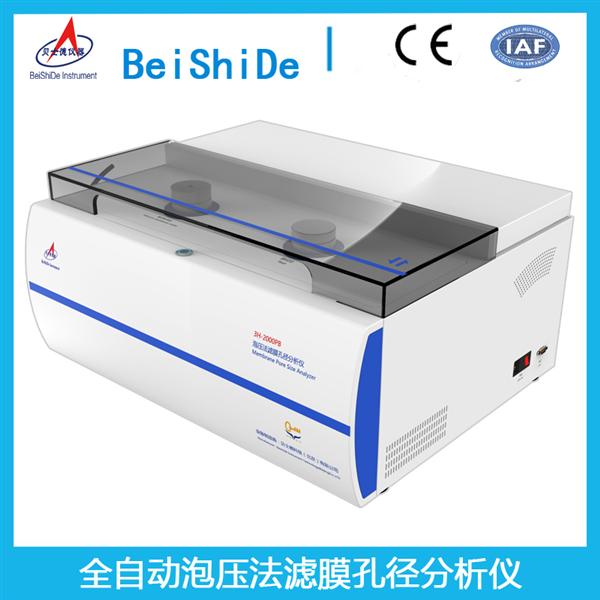There are several techniques used to measure pore size in materials, including nitrogen adsorption, mercury intrusion, and the bubble pressure method. However, when it comes to testing the pore structure of membranes, the bubble pressure method (also known as gas-liquid flooding) is considered the most appropriate. Below are the reasons why:
First, limitations of nitrogen adsorption:
1. The pore size range that can be measured using nitrogen adsorption is typically between 0.35 nm and 500 nm. This means it’s not suitable for analyzing larger pores, such as those found in microporous membranes.
2. Membrane materials often have smooth inner and outer surfaces, which leads to low adsorption capacity. As a result, the data obtained from nitrogen adsorption may have significant errors.
3. Nitrogen adsorption measures both through-pores and blind pores, but what matters most for membrane performance is the diameter at the narrowest point of the through-hole (the throat). Since nitrogen adsorption cannot distinguish this critical parameter, the results may not be accurate.
Second, disadvantages of mercury intrusion:
1. Mercury intrusion can measure pores ranging from 50 nm to 500 µm. However, to test smaller pores (e.g., less than 100 nm), extremely high pressures (over 20 MPa) are required. These pressures can damage the membrane structure, leading to inaccurate or distorted results. In contrast, the bubble pressure method applies much lower pressure—typically below 0.1 MPa—making it safer for delicate materials.
2. Similar to nitrogen adsorption, mercury intrusion also tests both through-pores and blind pores rather than focusing on the throat diameter, which is the most important factor for membrane performance.
Third, advantages of the bubble pressure method:
1. It can measure pore sizes ranging from 10 nm to 500 µm, making it highly versatile for different types of membranes.
2. This method provides detailed information about the throat diameter, maximum pore size, average pore size, pore size distribution, and permeability of the membrane material.
3. The principle behind the bubble pressure method aligns well with the characteristics of membrane materials. It works by applying a controlled pressure difference across the membrane, allowing the immersion liquid to be displaced from the pores based on surface tension. This enables precise measurement of the minimum pore size, which is crucial for determining filtration efficiency.
The 3H-2000PB Bubble Pressure Filter Membrane Pore Size Analyzer is an industry-standard device that uses this technique. It is widely accepted as a reliable method for pore size analysis according to ASTM standards.

Ceramic Guides For Sale,Al2O3 Ceramic Guides,Custom Ceramic Guides,Ceramic Guides Rod
Yixing Guangming Special Ceramics Co.,Ltd , https://www.yxgmtc.com
![<?echo $_SERVER['SERVER_NAME'];?>](/template/twentyseventeen/skin/images/header.jpg)